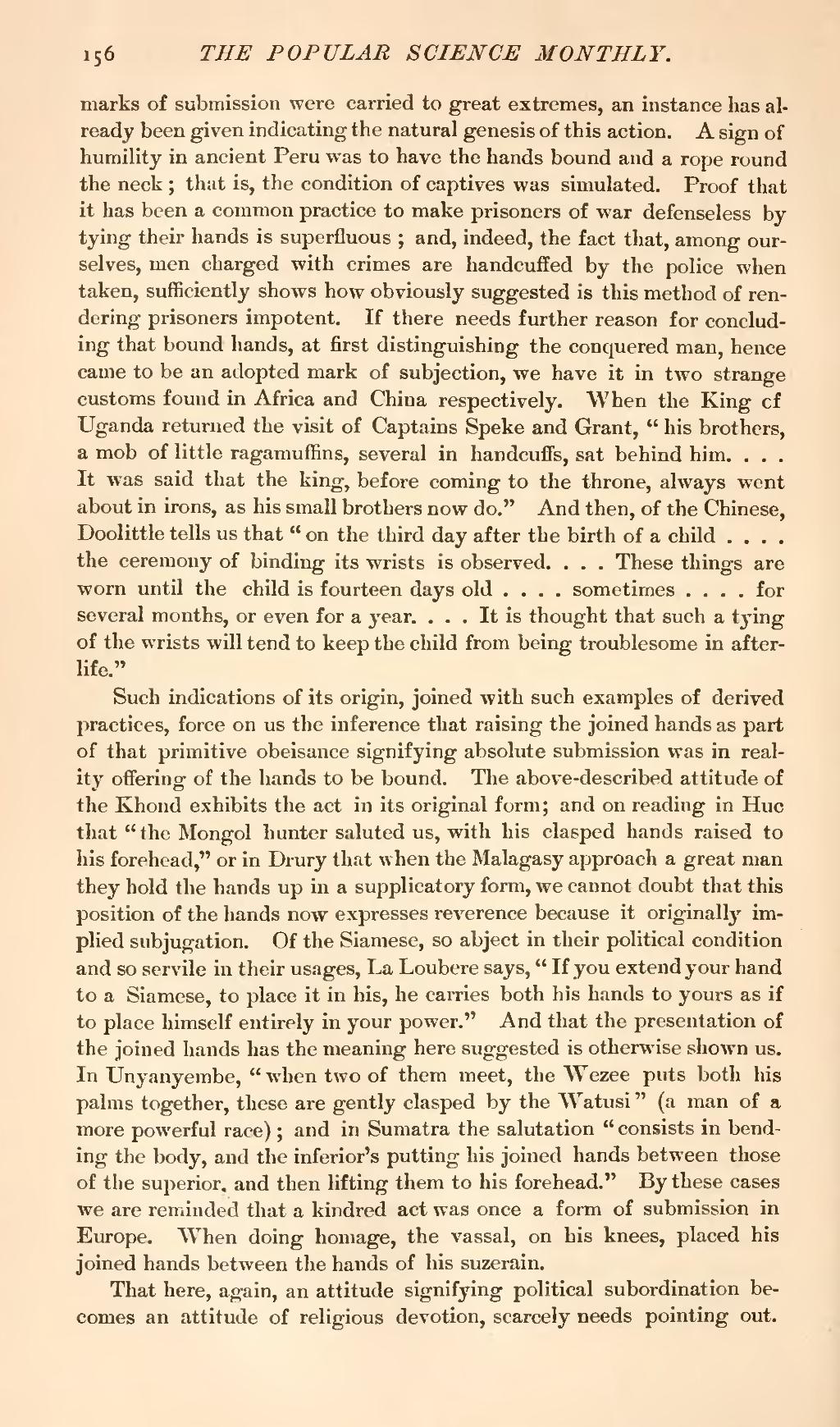marks of submission were carried to great extremes, an instance has already been given indicating the natural genesis of this action. A sign of humility in ancient Peru was to have the hands bound and a rope round the neck; that is, the condition of captives was simulated. Proof that it has been a common practice to make prisoners of war defenseless by tying their hands is superfluous; and, indeed, the fact that, among ourselves, men charged with crimes are handcuffed by the police when taken, sufficiently shows how obviously suggested is this method of rendering prisoners impotent. If there needs further reason for concluding that bound hands, at first distinguishing the conquered man, hence came to be an adopted mark of subjection, we have it in two strange customs found in Africa and China respectively. When the King of Uganda returned the visit of Captains Speke and Grant, "his brothers, a mob of little ragamuffins, several in handcuffs, sat behind him. . . . It was said that the king, before coming to the throne, always went about in irons, as his small brothers now do." And then, of the Chinese, Doolittle tells us that "on the third day after the birth of a child. . . . the ceremony of binding its wrists is observed. . . . These things are worn until the child is fourteen days old. . . . sometimes. . . . for several months, or even for a year. . . . It is thought that such a tying of the wrists will tend to keep the child from being troublesome in afterlife."
Such indications of its origin, joined with such examples of derived practices, force on us the inference that raising the joined hands as part of that primitive obeisance signifying absolute submission was in reality offering of the hands to be bound. The above-described attitude of the Khond exhibits the act in its original form; and on reading in Hue that "the Mongol hunter saluted us, with his clasped hands raised to his forehead," or in Drury that when the Malagasy approach a great man they hold the hands up in a supplicatory form, we cannot doubt that this position of the hands now expresses reverence because it originally implied subjugation. Of the Siamese, so abject in their political condition and so servile in their usages, La Loubere says, "If you extend your hand to a Siamese, to place it in his, he carries both his hands to yours as if to place himself entirely in your power." And that the presentation of the joined hands has the meaning here suggested is otherwise shown us. In Unyanyembe, "when two of them meet, the Wezee puts both his palms together, these are gently clasped by the Watusi" (a man of a more powerful race); and in Sumatra the salutation "consists in bending the body, and the inferior's putting his joined hands between those of the superior, and then lifting them to his forehead." By these cases we are reminded that a kindred act was once a form of submission in Europe. When doing homage, the vassal, on his knees, placed his joined hands between the hands of his suzerain.
That here, again, an attitude signifying political subordination becomes an attitude of religious devotion, scarcely needs pointing out.

